|
The author’s father, 16, stands second from right in front of La Bonanza department store in Tucson, Arizona. The photo, taken in 1916, shows a “Special” priced at $59; the window reflects a shoe store across the street, a hitching post and a mule hauling a wagon. This I know to be trueBy Carlos G. Vélez-Ibáńez From a lecture the author will present for the Saber es Poder—IME Award in Mexican American Studies ceremony at the University of Arizona at 6 pm on April 27, 2018, at the Consulate of Mexico in Tucson. Many years ago in Tucson, on hot summer late afternoons sometimes, my father, Adalberto, my mother Luz Ibañez, my sister Lucy, and I would climb into my dad’s Model A Ford troquesito and look for ways to temper the heat of the day. On some occasions, we would go to Randolph Park where the grass was cool or sometimes for a little kid then only 4 or 5 years-old for an exciting ride up to A Mountain to peer down to the beginning of the winking lights of the then small city of Tucson. The Lyric and Plaza Theaters green, gold, and red marquees twinkled their upcoming attractions. Or sometimes, we simply rode around the University of Arizona with its palmeras and grass being sprinkled and took advantage of the breeze created by the “Forito” with the moisture of the sprinklers—a kind of ambulatory air conditioning at a time when only swamp coolers were the sources of relief if you had one. Since the seat of our Forito only had room for my parents and sister, I had to lay down on top of the seat back parallel to the back window and peer out at the huge brick buildings, tile roofs, and in the middle Old Main, setting itself apart from all the rest. I wondered why all this magnificence was there and I asked my Dad on one of those rides: Pa, Que hay alli? He paused as he turned the wheels around one of the many curves on the then small campus and said: “Allí está toda la sabidura del mundo.” There lies all of the world’s knowledge. I responded: “Allí voy a trabajar un día.” I’m going to work there one day. And I did and how I knew I don’t know but what I did know was that my parents and sister always confirmed on a daily basis that this is where there was “all of the world’s knowledge” and that it was for me to become part of it as a student and later after Mom and my sister had passed away, as an anthropologist. This I know to be true. But from this very early introduction to a world of knowledge, I also came to understand that what we knew to be true just was not known or part of this world at this university and not in many others in any substantive way. What I knew to be true was that the only reference to me as a person in elementary school was in a little primer entitled, “Carlos the Centipede,” and all the rest were about Dick and Jane who didn’t speak the language of my father and mother, and tías and tíos, and primas and primos, and of anything Mexican that I knew to be true. What I knew to be true was that I was born by accident in the old Saint Joseph’s Hospital in Nogales because we were returning to Tucson from visiting relatives in Magdalena and my mother pregnant with me went into labor pains right before the border line. After I was born, she said that my bassinet was placed next to the window parallel to the cyclone fence that separated Sonora from Arizona and that my feet were south while my head was north. So for the next many years, this travel was repeated many times during the year and my cousins and tías and tíos would reciprocate in kind and some of my cousins went to Salpointe and at times others attended the University of Arizona. This was a transborder life of extension beyond the border and we knew this to be true. We spoke Spanish when they visited and we spoke Spanish when we visited and my sister and I spoke Spanish to my parents and it was, however, sometimes a struggle. Because in fact many of us were in schools in which our language, much older than the University of Arizona or Arizona, was being submerged by an insistence on English sometimes brutally rendered. At times, we were pulled out of the waiting lines going into the elementary school room and if we spoke the forbidden language were given swats for each word spoken. There was no crying but that was left inside for many years and not forgotten. But this was balanced by caring Anglo teachers who made us hide behind them when the swatting principle passed by. I am sure that this was the only reason many of us did not become racists. For they, like some, had an uncommon commitment to protect the innocent. This we knew to be true. Nevertheless, we spoke and read it at home anyway and listened to my mother and father’s stories of their struggles and their achievements and of their unlimited capacities to overcome that which they should not be able to do and achieve that which they should not be able to do as well. So that my mother who spoke English in wonderful fractured phrases but spoke elegantly in Spanish, sang beautifully, and played the castanets at parties, read the Maryknoll Fathers’ lefty publications, and had a “fayuca” selling clothes and shoes to Braceros and Tohono O'odham agricultural workers in Marana, would talk about the Mexican Revolution and how her father—a Colonel of Cavalry had been killed at the battle of Parral with a dum-dum bullet as he was boarding a train after being defeated by Villa’s troops. Yet, her mother, almost simultaneously in the courtyard of her home, plugged the wounds of young revolutionaries with pillowcases and bed sheets and held their heads while they lay dying and asking for their own mothers. From this compassion grew my Mom’s unwavering moral center to defend the innocent and grew livid many years later in the late 1960’s when on television she saw police beating protestors during the Chicago convention and stated her displeasure in no uncertain terms in Spanish and fractured English. But I didn’t know then and until much later that this staunch Catholic centered moral woman was also a Sephardic Jew who revealed it to me after my sister had died and perhaps that was also part of her moral equation as well. I knew this to be true. So did my bilingual father speak quietly of how he had been sent by his father to Tucson from Magdalena to his relatives on his mother’s side who had been in Tucson and Tubac since the Presidio. The Gastelum, Garcia, and Gil networks of viejos Mexicanos Indo Espańoles had gone back and forth between Tucson and Tubac and Magdalena and Altar long before there was an Arizona but referred to then only two grandmothers ago as la Pimeria Alta y Pimeria Baja or simply as Sonora. “The surrey is important because my grandfather had a factory (in Magdalena, Sonora) of 50 men making surreys, stagecoaches, and ore wagons for the mines. worked as a clerk in La Bonanza (department store) which later became Jacome’s, and later ceased to exist in the 1970s. The man in the middle of the picture is Alejandro Jacome who was the part owner of the store.” He had been sent to learn English so that his father Manuel could open a carriage and ore wagon factory in order not to have to sell his wagons to Federico Ronstadt who then took his nameplate off and sold them as his own. The invention of the automobile ruined these plans so Adalberto went to elementary school, Roskruge, and Tucson High and by going back and forth to Magdalena learned also to become an auto mechanic since the “factory” in Magdalena was converted to an automobile garage and gas station. Simultaneously, he sold clothes at the age of 16 at La Bonanza which later became Jacome’s and also delivered telegrams for Western Union, and as well he used a piano tuning fork to tune Barney Oldfield’s wheel spokes on his racing car which ran races on Speedway, which is now a major thoroughfare. But he also spoke in measured tones of the terrible things that Sonora did to the Yoemi people and said as a child he witnessed the hanging of these people for miles between Magdalena and Imuris and many of those who escaped created Pascua Village off of Grant Road and Guadalupe south of Phoenix by crossing that bifurcation we call the border. And on that border he spoke of how his eldest brother Lauro had caught up with a deposed Revolutionary Coronel who had murdered his compadre. The Colonel had killed him when he ordered him to stand down as the Alcalde and he had refused. Later the Colonel had lost favor in the new Revolutionary government and fled to the hills of the Bacatete Mountains but the Yoemi who lived there sent word to my Tío Lauro that he would be crossing at Nogales. So he waited for the Colonel at the Yellow line separating the two Nogaleses and noticed an ice truck that delivered ice from Nogales, Sonora to Nogales, Arizona was not dripping water from its canvas-covered load. He stopped it and took out the hiding deposed Colonel who begged for his life on his knees. But Lauro being the man he was, placed his 45 Colt Revolver in the man’s mouth and killed him. My Dad said that his feet lay on the Sonora side, while his blood ran north. So for many years, “Ed,” as he was known by his fellow mechanics because they couldn’t pronounce “Adalberto,” came home to regale us with his stories of having fixed the impossible, taking complex differentials and transmissions of huge trucks and making them hum again simply by listening to the way the gears were turning and falling inside of their covered gaskets. 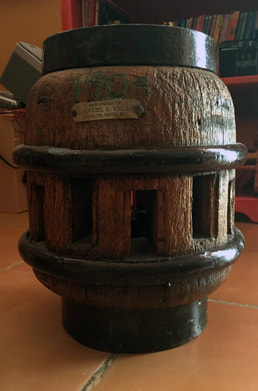 A picture of a mesquite wagon wheel with the author's grandfather' name plate, and a date carved in by his father so as not to forget when it was built. A picture of a mesquite wagon wheel with the author's grandfather' name plate, and a date carved in by his father so as not to forget when it was built. One day, he came home and I was now around ten years old and instead of regaling us, he told my mother how he had asked for a raise at his job and how the foreman had told him “to go back to Mexico.” And even though my mom soothed his brow when he came home, from then on he was very quiet about his work. This we know to be true. But we also lived a transborder life in spite of, like I said, frequent visitations and travel across the bifurcation but lived that life in Tucson so that on Fridays my mother, father, and sister and I would now be driven in the Forito to the Plaza Theater and fall off of our chairs at the antics of Cantinflas and Tin Tan, admire the voice of Jorge Negrete, and swoon at the sight of Maria Felix while I munched on buttered popcorn. And on Saturday we would go to the Lyric Theater across the street where we watched second-run American movies and admired Humphrey Bogart and Ingrid Bergman and Bob Hope, also swooning and laughing but in English. My sister Lucy worked as a cashier there after being moved from the Fox Theater so she could speak to the customers in Spanish. And we also watched the Pathway Film news in English about World War II. But we were not there either since all of the faces and names of those appearing had nothing to do with us. But when we visited the Acostas on Sunday next and a telegram arrived that Bobby had died in a prisoner of war hospital after being shot down over Germany, Mrs. Acosta’s screams would indelibly be etched in my mind and soul and they remain there to even this moment. I knew this to be true. A few years later and me now a teenager, when Gene Suarez came to court my sister Lucy after he had returned from Korea having served as the only Chicano Marine combat photographer for many months, I couldn’t fail to notice that he was barely able to hold a cup of coffee in his hand without clinking the saucer underneath and when I asked stupidly why he shook, he could only grimace a smile. However, we didn’t appear in any movies about Korea nor in any documentary following that war so that later when my cousin Bill now a retired mathematics professor came home, he was ignored or despised as a Vietnam veteran until only very recently. Yet even now, Ken Burns ignored us again in his series of WWII and Vietnam films. We knew that was not true and even so much more. But what we also learned was to become culturally bilingual, bicultural, and multihistorical and not homogenized even though most institutions insisted us with the opposite. We became in spite of and not because of and we became also quite cognizant of the limits of all of the world’s knowledge which we knew was there but not made present by any medium or narrative. So, we often reflected on what we knew to be true. Thus, we were taught history through unsolicited conversations so that one day after we had eaten dinner and in the living room watching Gorgeous George—the blond, curly haired wrestler on a black and white Sylvania TV, my mother delicately broached the subject with my father, that Lucy, before she met my brother in law, was going to be visited by a young man. My sister was seven years older than I so I could be a royal pest when young men came over. But on this occasion my very Sonorense Dad asked who the young man was and my mother responded that he was a young Irish neighborhood boy by the name of Brendan Flannery, but said something like (phonetic pronunciation) to which he responded that No, he only wanted Sonorenses. My mother said,” but wait a minute; don’t you remember that they fought for us?” I didn’t know what this meant so I asked, and my mom responded that this was the Irish San Patricio Brigade that fought valiantly for Mexico against the invading American army in Mexico City. My dad paused and responded, “Ah, sí, dile al muchacho que venga.” So from two grandmothers ago this was still fresh in their minds and now mine. This we know to be true. Yet the non-existing process was reinforced again and again in almost every imaginable way possible from schools, to films, to novels, to short stories, to newspapers, to non-histories, or even worse represented as a people without histories, but just a population to be bought and sold like those we observed during the awful Operation Wetback of the 1950s. My parents made sure that we were well dressed before we went to mass a la Iglesia de Santa Cruz on 22nd Street so we wouldn’t be confused with the “mojados” who were rounded up as they left Holy Communion. My dad remembered in the thirties that there had been previous expulsions of hundreds of mexicanos many of them American citizens and were lined up like cattle for the train trip to Nogales. But, ironically many of those same mexicanos returned to fight in World War II like my kids’ Uncle Tony who was wounded at Anzio serving as an Army paratrooper and chased about by a German Tiger tank until it caught up with him, but none appeared like him except ever so slightly much later in the Band of Brothers series. This we knew to be true. But, it all came to a head during and after Vietnam because we just said “Ya Basta” and in many different ways we invented an entire course of study that we knew to be true and that was Mexican American Studies. And we experimented during that period and created, and argued, and debated what we thought we knew to be true. Some of us went off on fancy theoretical roads that often obfuscated rather than clarified which we knew to be true. Sometimes we created elaborate explanations filled with polysyllabic words of alleged wisdom and understanding but sometimes we confused ourselves. Yet for the most part, I think we got it right so that an entire literature exploded of creative works in the humanities, social sciences and stimulated our presence in the sciences. So that across the board exploded the works from novels to short stories, from Miguel Mendez to Sandra Cisneros and in grand works of anthropology like those of Roberto R. Alvarez and Diego Vigil and certainly almost parallel to this was Tom Sheridan’s great work and in history as well as such as Dave Weber’s masterful works, and Juan Gomez Quinońes, and of course my old friend Oscar Martinez, and the old Sonorense descendent—cantankerous but historically wonderful—Rudy Acuña. But not to be outdone and to balance if not overtake the male narratives emerged the crucial and the pioneering work of the Chicana history risk-taker Antonia Hernandez and the feminist genius of Vicki Ruiz, and the great border Poet and Essayist, Gloria Anzaldua, and certainly not the least la chiquita pero muy grande—the anthropologist Patricia Zavella documenting the historical and anthropological space and place of Mexican cannery women—things began to come together as more proximate to that which we knew to be true. And scientific warriors like my Cousin Bill and many others in the sciences made sure that our kids became mathematicians, biologists, material scientists, and created new funds of knowledge and what many do not know is that in the sciences alone the Chicano Ford Fellows in the sciences were awarded over a 20 year period almost 185 million dollars in research awards of a sample of Fellows I collected. This while my cousin Manny taught English at Pima to give our kids hope and knowledge and a way forward past the non-narratives. Gilbert, my other cousin, created “El Mariachi” to solidify lo mexicano once and for all in space and place and without denial or shame of either language, culture, or song. And so many others refused to be unnoticed or erased like my former freshman high school student, Isabel Garcia, who went on to be one of the premier immigration and social justice protectors of innocents and, of course, Sal Baldenegro and Raquel Goldschmidt who continue to fight the good fight to this moment. And fresh from concretizing the great copper strikes with her incessant support and action, Ana O'Leary Ochoa joined a new cohort of intellectual warriors with Norma Gonzalez as graduate students and they became amazing innovative knowledge makers of our history and language, and most recently both of them crossed borders to tell the tales of the suffering of the innocents of deported parents now in schools in Mexico suffering what generations earlier suffered in English-only schools. They and We in fact pivoted through our work through Mexican American Studies and impacted greatly on the narratives of universities, colleges, and public schools from a population noted merely as a partial commodity to a historical one, one present from the past, and one present in the present and one present for the future. So we created departments, programs, and even schools all devoted to this population sometimes ethnically focused, sometimes in tandem with other populations, and certainly in many cases with a transborder cast that recognized the commonality of not only culture and language, but of relationships, connectivities, and ties between all of the varying versions of ourselves. And in spite of the state debacle of the Tucson program, the students, teachers, and community knew what was to be true—and won—at least the war but not the battle, not quite yet. The negating assumption of the anti-Mexican American move failed because it could simply not recognize the following. We range culturally and genetically from Texcoco of Mesoamerica to the Four Corners of Arizona, Utah, New Mexico, and Colorado, from the Spanish Palace of Madrid to the Alhambra of Granada, and from the Castillo of Chapultepec of Mexico City and the Virgen de Guadalupe on el Cerro de Tepeyac to the adobe walls of the Presidio of Tucson and to the Dove on the Desert—San Xavier del Bac and from our homes with the cyclone fences behind which grow yellow roses to the red and blue banners of Bear Down Gym. We are history makers and doers and accept all as we would accept ourselves since in fact we are the world in so many ways. We are Mexican American Studies and we are the intellectual and cultural repository and depository of this population south and north of the bifurcated line only two grandmothers old. We narrate about ourselves and others and we respect the mechanics, carpenters, gardeners, mathematicians, physicians, biologists, and housecleaners, taco stand owners, and abuelas y tías, y primos and friends, Anglos, African Americans, Indígenas, Asians, todos—because we are also all of them. We speak Spanish, English, Spanglish, and if we are very lucky, a bit of Yoemi, Navajo and Tohono O'odham. We lose our children in American wars, and sometimes in the street and too many still are not graduating and too many are locked up where they should not be. We have struggled, we have achieved, we have failed and we have succeeded. But we are not ahistorical nor a simple commodity. We are history and history makers and We know all this to be true and We are Mexican American Studies. So that if I were five again and lying on top of the backseat of my Dad’s Forito and passing by the University of Arizona and I asked once more: “Pa, que hay allí?” Now, his answer would be slightly changed: “Allí ahora si está toda la sabiduria del mundo.” Now all of the world’s knowledge is there. I know that to be true. 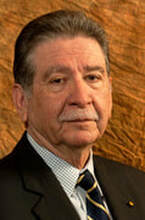 Carlos G. Vélez-Ibáñez, an anthropologist, is Regents’ Professor and Founding Director Emeritus of the School of Transborder Studies and Motorola Presidential Professor of Neighborhood Revitalization, and Professor, School of Human Evolution and Social Change at Arizona State University. He has also taught at UCLA and the University of Arizona where in 1982 he was the founding director of the Bureau of Applied Research in Anthropology. Carlos was recently named the first recipient of the newly created Saber es Poder-IME Academic Excellence Award in Mexican American Studies, which includes a $10,000 cash award.
0 Comments
Your comment will be posted after it is approved.
Leave a Reply. |
Archives
June 2024
Categories
All
|
Donate and Make Literature Happen
is published by the Somos En Escrito Literary Foundation,
a 501 (c) (3) non-profit, tax-exempt corporation. EIN 81-3162209

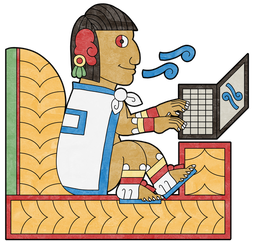
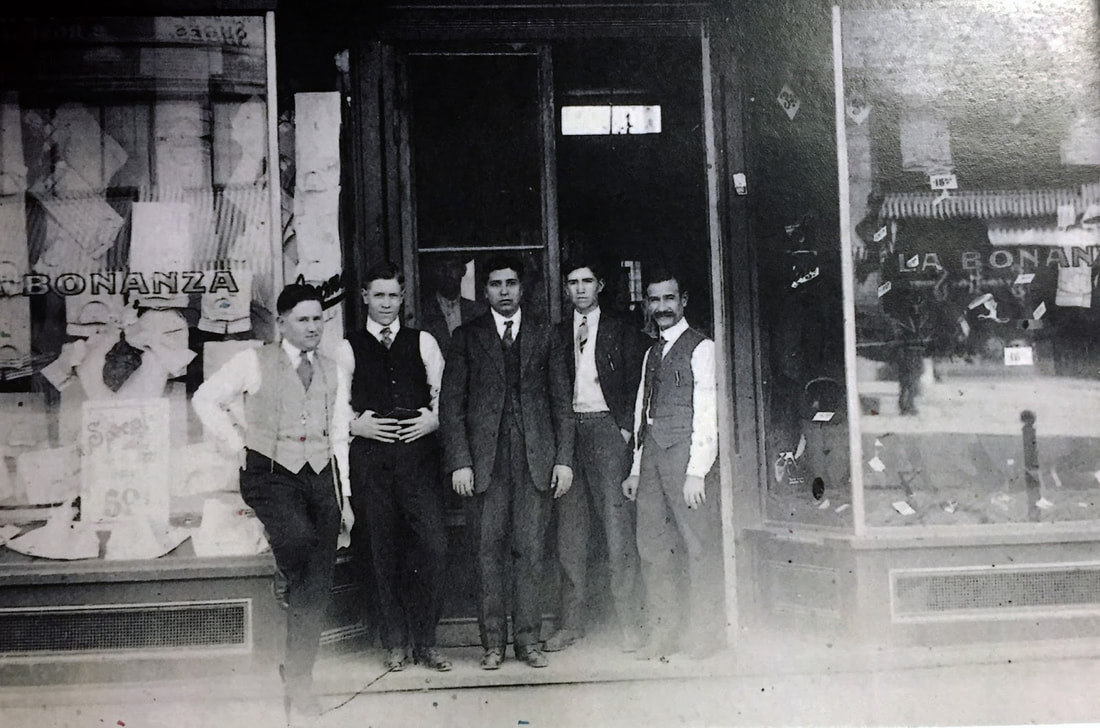
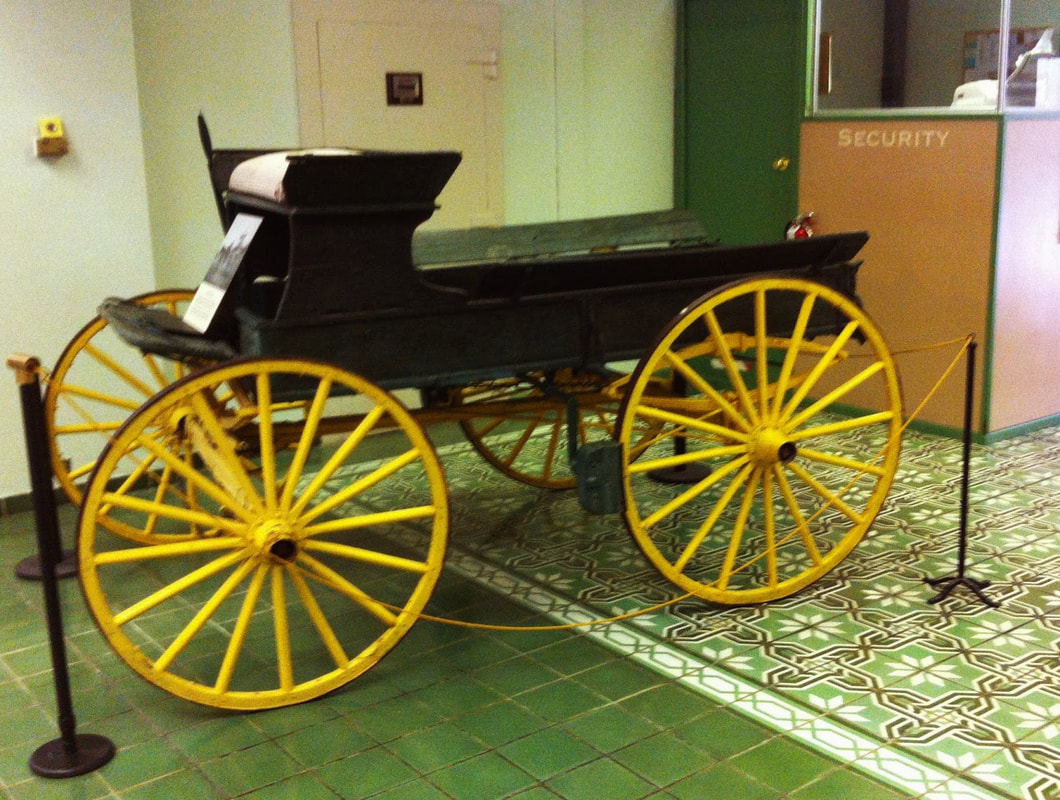
 RSS Feed
RSS Feed